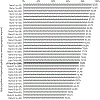Use of National Syphilis Surveillance Data to Develop a Congenital Syphilis Prevention Cascade and Estimate the Number of Potential Congenital Syphilis Cases Averted
- PMID: 29543623
- PMCID: PMC6737534
- DOI: 10.1097/OLQ.0000000000000838
Use of National Syphilis Surveillance Data to Develop a Congenital Syphilis Prevention Cascade and Estimate the Number of Potential Congenital Syphilis Cases Averted
Abstract
Background: Recent increases in reported congenital syphilis have led to an urgent need to identify interventions that will have the greatest impact on congenital syphilis prevention. We sought to create a congenital syphilis prevention cascade using national syphilis surveillance data to (1) estimate the proportion of potential congenital syphilis cases averted with current prevention efforts and (2) develop a classification framework to better describe why reported cases were not averted.
Methods: We reviewed national syphilis and congenital syphilis case report data from 2016, including pregnancy status of all reported female syphilis cases and data on prenatal care, testing, and treatment status of mothers of reported congenital syphilis cases to derive estimates of the proportion of pregnant women with syphilis who received prenatal care, syphilis testing, and adequate syphilis treatment at least 30 days before delivery, as well as the proportion of potential congenital syphilis cases averted.
Results: Among the 2508 pregnant women who were reported to have syphilis, an estimated 88.0% received prenatal care at least 30 days before delivery, 89.4% were tested for syphilis at least 30 days before delivery, and 76.9% received an adequate treatment regimen that began at least 30 days before delivery. Overall, an estimated 1928 (75.0%) potential congenital syphilis cases in the United States were successfully averted. Among states that reported at least 10 syphilis cases among pregnant women, the estimated proportion of potential congenital syphilis cases averted ranged from 55.0% to 92.3%.
Conclusions: Although the majority of potential congenital syphilis cases in the United States were averted in 2016, there was substantial geographic variation, and significant gaps in delivering timely prenatal care, syphilis testing, and adequate treatment to pregnant women with syphilis were identified. The congenital syphilis prevention cascade is a useful tool to quantify programmatic successes and identify where improvements are needed.
Figures



References
-
- Ingraham NR Jr. The value of penicillin alone in the prevention and treatment of congenital syphilis. Acta Derm Venereol Suppl (Stockh) 1950; 31(Suppl. 24):60–87. - PubMed
-
- Sánchez PJ, Wendel GD. Syphilis in pregnancy. Clin Perinatol 1997; 24:71–90. - PubMed
-
- Shafii T, Radolf JD, Sánchez PJ. Congenital syphilis In: Holmes KK, Sparling PF, Stamm WE, eds. Sexually Transmitted Diseases. 4th ed. New York, NY: McGraw-Hill, 2008:1577–1612.
MeSH terms
Grants and funding
LinkOut - more resources
Full Text Sources
Other Literature Sources
Medical

